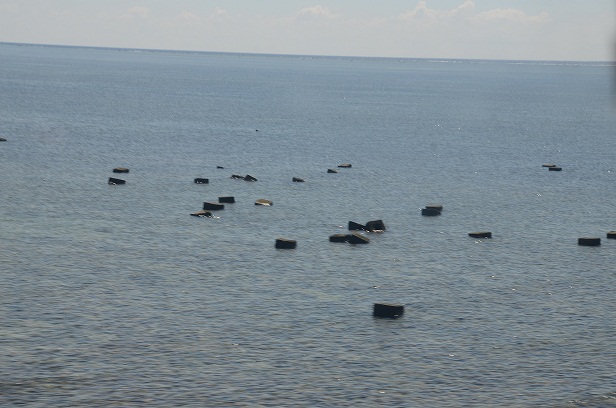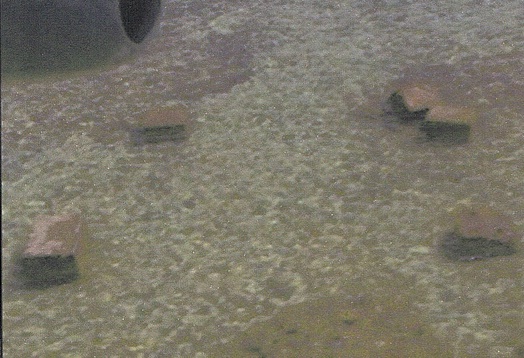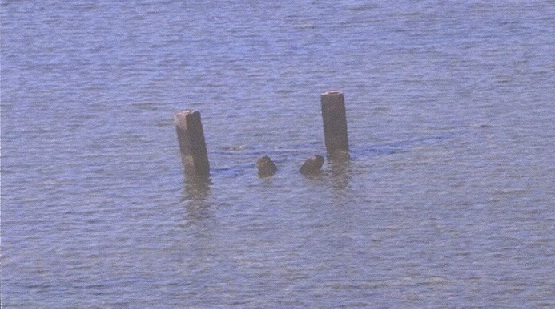
By Ellen Tordesillas,VERA Files
The concrete blocks in Bajo de Masinloc, which Philippine defense and military officials last month accused China of putting there, may have actually been placed by the United States Navy decades ago, military sources said.
A military investigation found that the concrete slabs were covered by algae, an indication that they had been in the area for many years. The probe also found that the blocks had been used by the U.S. Navy as “sinkers” to preserve the wreckage of old ships they used for target practice.
The information contradicts Defense Secretary Voltaire Gazmin’s statement at the congressional budget hearing in September in which he accused China of laying the foundation for structures similar to what it did in Mischief Reef in the Spratly Islands in 1995.
Gazmin released photos of some 75 concrete blocks scattered within Bajo de Masinloc, including a photo of two vertical posts at the shoal’s entrance. Philippine Navy Chief Jose Luis Alano had said they would remove the concrete blocks while Foreign Secretary Alberto del Rosario said the government would file a diplomatic protest with China. The blocks were never removed; the protest was never filed.
B
China claims the shoal, 467 nautical miles away from the mainland, as part of its territory with the name Huangyan Island.
Bajo de Masinloc is referred to as Panatag (calm in Tagalog) by Filipino fishermen who seek refuge in the area during stormy weather.
Sources said the U.S. Navy used Bajo de Masinloc as an impact or bombing range. The concrete slabs were needed as “sinkers” to keep the balance of the old decrepit ships which were placed in the shoal for the U.S. Navy’s shooting and bombing runs.
Over the years, however, the derelicts became the subject of “salvage operations by local salvors also known as kumbatseros.”

Military sources also said they interviewed a number of fishermen who had seen the concrete blocks way back in the late 1980s and even used them as step boards during high tide.
President Aquino, speaking at the annual presidential forum of the Foreign Correspondents Association of the Philippines, shared the information that the concrete blocks “are very, very old concrete blocks. Some of them have barnacles attach to them. They are not a new phenomenon.”
Following Gazmin’s statement before Congress, China accused the Philippines of fabricating the photos, and released its own photos of Bajo de Masinloc without the concrete blocks.
The two vertical posts north of the shoal’s entrance turned out to be part of structures placed by the Philippine Navy in 1989, as part of the aborted plan to build a lighthouse there.
Aquino said he does not see any immediate need to remove the concrete blocks, which do not “present immediate danger to any of our vessels or even those that would transit in the area around Scarborough shoal.”
Despite the almost permanent presence of three Chinese ships in Bajo de Masinloc since April 2012, Aquino insists the Philippines has not lost the 120-square-kilometer strategically vital shoal because “we can still go there and we do have overflight missions,” adding that Filipino fishermen “are still in that area.”
The three-month standoff between the Philippines and China in Bajo de Masinloc last year triggered the filing by the Philippines of a suit before the United Nations Arbitral Tribunal. The Philippine government has questioned the legality of China’s 9-dash line that encompasses almost the whole of the South China Sea and encroaches on the exclusive economic zone of several countries in the Southeast Asia.
China has refused to participate in the U.N. suit.
(VERA Files is put out by veteran journalists taking a deeper look at current issues. Vera is Latin for “true.”)
Sec. Gazmin like most military officials are more pro-Americans. It’s understandable considering many of our military officers went to schooling in the US and the military of the two countries have been working together for a long time now.
However, even if the the concrete blocks were not from China, there’s no denying that she has her soldiers stationed on the disputed waters and continues to bully the Philippines. It won’t change the fact.
New York Times just released this presentation the other day and for the first time we get to peek inside the lives of our 8 soldiers who have remained in the decrepit BRP Sierra Madre in order to prevent China’s slow-motion intrusion into yet another island under our control – Ayungin Shoal, and later for the control of Reed Bank d and all the oil and gas underneath.
Jeff Himmelman gives us a perspective of the conflict from the view of the Filipinos and the US’ involvement therein, as expressed by his contacts in the military and from the people in Washington. Quite comprehensive.
Does anyone know that the BRP Sierra Madre was also previously a US ship (USS Harnett County) in WWII then served in the Vietnam war and was given to Saigon (renamed RVNS My Tho) in 1970 but passed to us in 1976? Inside pictures of the giant structure rusting away and the miserable lives of the 8 soldiers guarding our sovereignty are absolutely incredible I feel sorry for them.
“What China is doing is putting both hands behind its back and using its big belly to push you out, to dare you to hit first. And this has been quite effective.”
http://www.nytimes.com/newsgraphics/2013/10/27/south-china-sea/
True. Our poor soldiers have inadequate foods and have a very poor living condition there not to mention they’re far away from their families. It’s easy for foreign intruders to harm them. Is that the way our government treat our soldiers throwing them at that area without protection and help?
#2 Nice NYT article. The navy should have parked another LST at Scarborough Shoal. The flotilla of chinese fishing boats are like a swarm of locust. They will consume every resource there in no time.